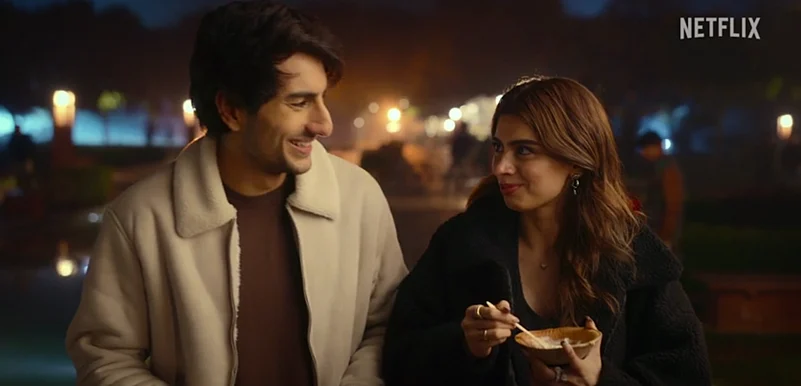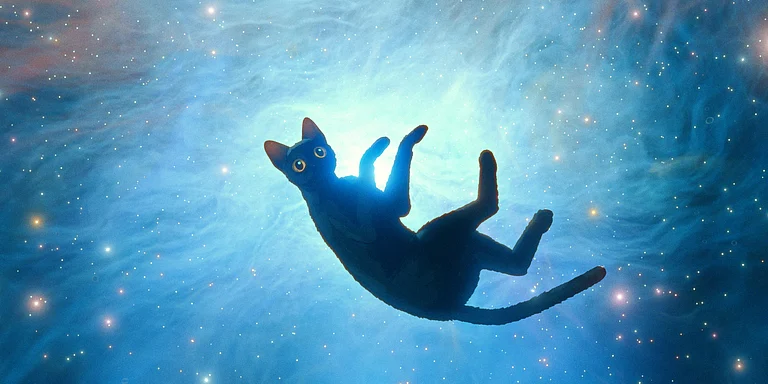Once upon a time, the streaming space was heralded as a bonafide disruptor in the world of entertainment. It promised to be an oasis for fresh talent, bold storytelling, and narratives that the mainstream wouldn’t want to touch with a ten-foot barge pole. Stories like Baby Reindeer (2024), Adolescence (2025), Severance (2022), and Hacks (2021) have kept this legacy alive internationally. But, in India, this space seems to be morphing into something else entirely.
There was a point when the film industry in India had to distinguish between a single screen film and multiplex cinema. Right now, they seem to be increasingly losing connection with what the streaming audience wants. There's a cultural void deepened by this rift. The unsuccessful theatrical run of films like Laapataa Ladies (2023) or Superboys of Malegaon (2025) causing concern about non-tentpole films further underline this lack of understanding. Films like these thrive on word-of-mouth and audiences that seek substance over spectacle—traits that align more with the streaming demographic than the theatrical crowd.
There are industry rumours of Netflix India rejecting scripts that do not come with a star kid attached to it, of OTT platforms hesitating or refusing to showcase finished projects that dare to break away from a dumb, second screen friendly (a story depth-less enough to let you casually browse your phone) formula. Films with an indie heart, shows that push boundaries, even those that come backed by prominent names are not welcome anymore in this space that was meant to be for them. If it라이브 바카라 not glossy, Gen Z-coded and algorithm-friendly, it라이브 바카라 dead on arrival. Like mainstream Bollywood, Netflix India has become a VIP launchpad for star kids. Here, surname trumps substance. From The Archies (2023) to Nadaaniyan (2025), the streaming giant has quietly transformed into Bollywood라이브 바카라 most exclusive finishing school. And it has no intention of switching strategies from the look of things.

Even Anurag Kashyap has called out Netflix India라이브 바카라 hypocrisy, labeling them as “dishonest and morally corrupt,” while praising Adolescence (2025). Of course, Kashyap hailing Adolescence for its courage while also praising Sandeep Reddy Vanga—whose films glorify toxic masculinity—is the kind of absurdity and dissonance that makes your head spin. It라이브 바카라 like applauding both a feminist manifesto and an Andrew Tate podcast in the same breath. But that is another discussion in itself.
Kashyap isn’t just another filmmaker ranting about Netflix; he was one of their earliest collaborators, the first Indian director to tie up with the platform when Sacred Games (2018) set the gold standard for Indian streaming content. The series faced legal challenges due to scenes perceived as offensive, particularly those referencing former Prime Minister Rajiv Gandhi. This controversy led to calls for censorship. Consequently, Netflix India—and its contemporaries—introduced content disclaimers and engaged in self-regulation, adjusting its content to navigate India's complex political and cultural landscape.
Today, Kashyap has become one of Netflix라이브 바카라 loudest critics, calling their Indian arm a “totally opposite shitshow” compared to its global counterpart. His frustration? A platform that once sought out bold, risk-taking creators has devolved into a spineless machine churning out glossy, algorithm-driven mediocrity, greenlighting projects not based on merit but on marketability. Kashyap has five projects stuck in limbo, including Kennedy (2023), which had its big Cannes moment only to be left stranded by Zee Studios. Another project was only entertained if he turned it into a Money Heist (2017-2021) clone—so he walked away.
Kashyap is echoing a growing sentiment among India라이브 바카라 most cerebral, boundary-pushing filmmakers. He라이브 바카라 watched Netflix India reject projects that challenge conventions, while simultaneously patting itself on the back for its global appetite for risk. He points out that the few standout shows on the platform are either acquisitions—Delhi Crime (2019-2022) and Black Warrant (2025)—or projects that Netflix had little faith in—Kohrra (2023) and Trial By Fire (2023). If a story doesn’t fit OTT라이브 바카라 safe, sanitised vision of what Indian audiences “want” there are no takers. But, the success of the stories that Indian OTT seems the most hesitant to back shows a glaring gap in their understanding of what the audience wants. It라이브 바카라 clear that the problem isn’t just about what라이브 바카라 getting made. It라이브 바카라 about what라이브 바카라 being smothered before it even has a chance to breathe.
Indie filmmaker Aditya Kripalani라이브 바카라 comment under Kashyap라이브 바카라 post strips away any illusion that this is just a Netflix India problem—it라이브 바카라 an industry-wide issue. “Truly a sad state of affairs on Indian OTT in General,” he lamented. He explained how the rules on what is “saleable” are inconsistent. One day, a film is deemed “too dark” to acquire, the next, the platform is funding the most gratuitously violent show on its roster. “And this is a complaint against the entire OTT landscape. Not one platform. It라이브 바카라 addhock and random, (sic)” Kriplani wrote. “A star kid film will get 20 cr. Known actors who’ve been stars and proved themselves for decades won’t find a place. None of it makes sense.”
Prime Video India, who delivered the second season of Paatal Lok (2020-2025) after a five-year gap, has also featured plenty of projects involving star children. For instance, Call Me Bae (2024), a series starring Ananya Panday as a wealthy heiress navigating life after being disowned, offers a light-hearted story. However, its casting has contributed to the ongoing discourse on the prominence of industry insiders in leading roles even on streaming.

Panday라이브 바카라 OTT journey is particularly interesting. After her Bollywood debut was panned, she strategically used streaming to carve out a niche in a unique new age genre: ‘Millennial/Gen Z introspection’ dramas, from Gehraiyaan (2022) and Kho Gaye Hum Kahan (2023) to Ctrl (2024). The characters she has been playing in these stories also align with her personal brand image in the public eye. It라이브 바카라 a very Hollywood-style branding move, like Ryan Reynolds playing Ryan Reynolds in every movie.
A double jeopardy for everyone not invited to the party
In 2023, Zoya Akhtar라이브 바카라 The Archies saw the debut of three star kids—Agastya Nanda, Khushi Kapoor and Suhana Khan. They were cast as the main trio: Archie, Betty, and Veronica. The ‘outsiders’ in this film—Vedang Raina, Mihir Ahuja, and Yuvraj Menda—were cast as secondary characters. With a limited PR budget to support their profiles, they were sidelined by the media as well.
Netflix India's 2025 content lineup features several projects with a notable presence of Bollywood star children. The year started off with the screen acting debut of Shashi Kapoor라이브 바카라 grandson Zahan in Black Warrant. Sridevi라이브 바카라 daughter Khushi Kapoor teamed up with Aamir Khan라이브 바카라 son Junaid for their second screen appearance in Loveyapa (2025)—a theatrical flop quickly followed by Nadaaniyan, where Kapoor was cast alongside Saif Ali Khan라이브 바카라 son Ibrahim in his acting debut. We will also witness the directorial debut of Shah Rukh Khan라이브 바카라 son Aryan with Netflix라이브 바카라 The Ba***ds of Bollywood.

This entire rhetoric is not to discredit star kids or negate the validity of their ambitions. It라이브 바카라 not a crime to want to follow in your parents’ footsteps, especially in a profession as glamorous and lucrative as acting. The problem isn’t that they want a piece of the pie too, it라이브 바카라 that they want to hoard the whole pie and dictate who gets to make it too. The proverbial ‘insiders’ who prove their talent—like Konkona Sen Sharma or Shahid Kapoor—rarely face the same kind of backlash. Their work has always spoken louder than their last names and family legacies.
The mainstream industry, run by dynastic filmy families and generational shareholders, is already structured to favour insiders and conformists at every step. ‘Outsiders’—who are equally, or sometimes, more deserving—struggle for a fraction of the same chances. It is about the stranglehold of privilege, where access is inherited and opportunities are hoarded. When the gatekeepers only open doors for their own, the industry doesn’t evolve; it just recycles itself in prettier packaging. And where streaming was supposed to be a game changer, it becomes part of the same old machinery, polishing the familiar while the countless hopefuls remain stuck clawing at the glass ceiling, watching the spotlight pass them by.
For subscribers, it라이브 바카라 a double slap—streaming platforms keep hiking prices while serving up the same recycled faces in projects that feel more like brand endorsements than compelling storytelling. We’re paying premium rates, not for innovation, but to fund the career experiments of industry insiders. And with every forgettable nepo-fest we scroll past, it becomes clearer: the audience is footing the bill for Bollywood라이브 바카라 family business.
In a landscape that was supposed to disrupt the status quo, it라이브 바카라 disheartening to see streaming platforms fall back on the very formulas they were meant to challenge just to make the quickest buck. What was once the promised land of daring storytelling has now become just an appendage of the mainstream. It makes you wonder whether the death of the digital entertainment revolution in India has already happened, or if it was merely an illusion to begin with.
Debiparna Chakraborty is an independent Film, TV and Pop Culture journalist who has been feeding into the great sucking maw of the internet since 2010.
















